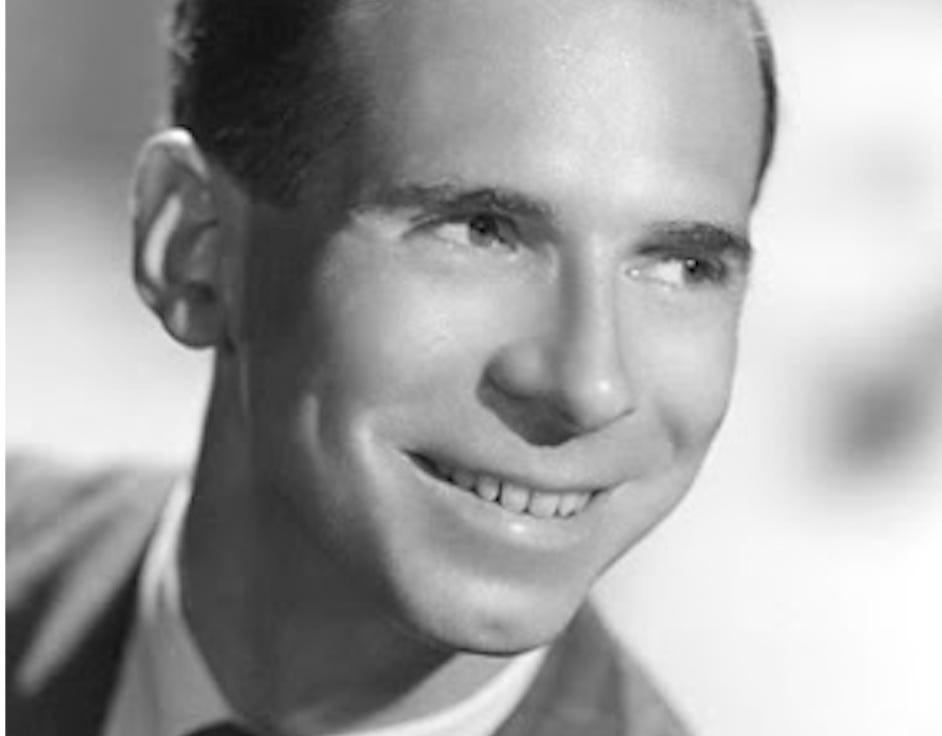If you listen carefully, you can hear American history in the music of masterful arrangers. One can sense the heat of the 1920s in the music of Louis Armstrong and Paul Whiteman, the Harlem Renaissance in early Duke Ellington, the cool elegance of the early 1940s in Artie Shaw, the post-war optimism of Paul Weston, the sporty brass of the late 1950s in Maynard Ferguson and the civil rights yearning in Oliver Nelson. [Photo above of Bill Finegan]
Only one band for me sounds like the uncertain period leading up to the country’s entry into World War II in 1941—Glenn Miller. The band had a tranquilizing sound that was pastoral, reaching back to an earlier worry-free time, and it also gracefully fed into the edginess fueled by the grim news from abroad.
The arranger who best captured the national anxiety as war neared and the desire to be calmed down and reassured was Bill Finegan. Today, Finegan is perhaps best known for his collaboration with Eddie Sauter in forming and co-leading the Sauter-Finegan Orchestra, starting in 1952.
Before this band’s quirky and sophisticated easy-listening sound became popular with suburban phonograph owners, Finegan was one of Miller’s premier composer-arrangers. Finegan began as a pianist leading his own trio in the 1930s before Tommy Dorsey recommended him to Miller, who hired Finegan as a staff arranger. [Photo above of Glenn Miller]
Finegan was on board with Miller from 1938 to 1942, the year Miller enlisted and formed the Army Air Forces Band with musicians in the service. Finegan’s specialty was ballads with a pulse-like tempo that often opened with a bucolic feel only to pick up in strength with Miller’s special sound.
Miller’s sound was achieved by arranging the clarinet to play in unison with the second tenor saxophone that played an octave below, while the two altos and the first tenor played inner harmony above the second tenor’s line.
To illustrate the beauty of Finegan’s arrangements for Miller, here are 18 examples of his touch in chronological order, providing a feel for America’s pre-war energy (prior to June 1939, the start of the war in Europe) and the growing anxiety and collective wish for simpler times as war neared. Finegan’s touch and taste throughout were exquisite:
Here’s Romance Runs in the Family, recorded at the Meadowbrook in Cedar Grove, N.J., in March 1939…
Here’s I Want My Share of Love (ignore the title error in the YouTube upload), recorded at the Meadowbrook in March 1939…
Here’s Runnin’ Wild, recorded in April 1939…
Here’s Star Dust, recorded in January 1940…
Here’s Rug Cutter’s Swing, recorded on the same January session…
Here’s Say It, recorded in February 1940. Dig how Finegan comes into the song, setting up the Miller sound. The arrangement is astonishing in terms of how it builds and the romantic drama it creates with a fox trot tempo…
Here’s Yours Is My Heart Alone, recorded in March 1940. Dig how Finegan builds the chart, with different sections of the band coming and going…
Here’s April Played the Fiddle, recorded in March 1940. Listen to how the opening unwinds…
Here’s The Nearness of You, recorded in April 1940. A gem of a chart…
Here’s Conversation Piece, recorded in May 1940…
Here’s A Million Dreams Ago, recorded in June 1940…
Here’s Angel Child, recorded in June 1940…
Here’s The Call of the Canyon, recorded in August 1940…
Here’s Yesterthoughts, recorded in September 1940…
Here’s I Guess I’ll Have to Dream the Rest, recorded in May 1941…
Here’s This Time the Dream’s on Me, recorded in September 1941…
Here’s I’m Thrilled, recorded in the fall of 1941…
And here’s The Story of a Starry Night, recorded on December 8, 1941, a day after the bombing of Pearl Harbor, which triggered America’s entry into World War II…




I'm big fan of the Sauter-Finegan Orchestra and I know that Bill Finegan arranged a lot for the Glenn Miller Orchestra. I didn't hear these recordings for years, so I'm really looking forward to hear your 18 examples later this evening. 🙂
Thank you for the thoughtful analysis of Glenn Miller. One of the frustrating things about him is none of his best work ever gets played. It’s always the same three tunes ad nauseam - In the Mood, Moonlight Serenade, Pennsylvania 6-5000, et al. Other attributes that are overlooked include the fact that Frank Sinatra thought highly enough of the band that he wanted to join it around the time he went with Tommy Dorsey. Not to mention the fact that in 1942 Miller had the most popular and highest grossing band in the country, and broke it up to serve in the armed forces. Hard to imagine anyone doing that in today’s all-for-me world.